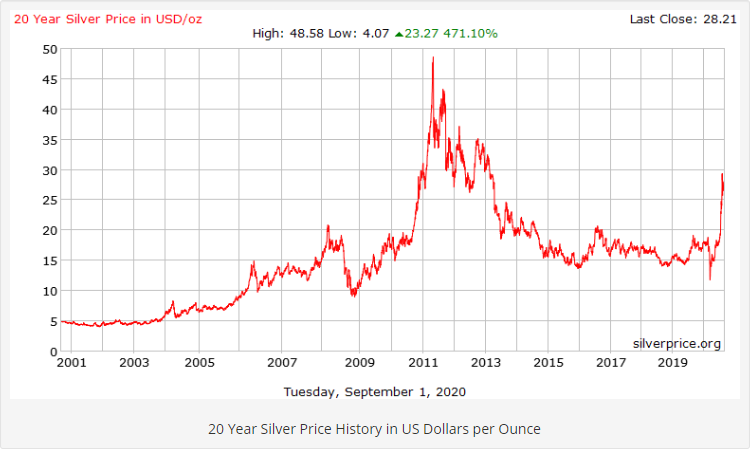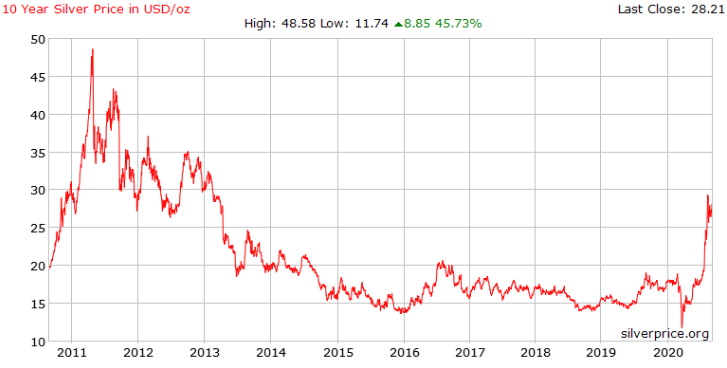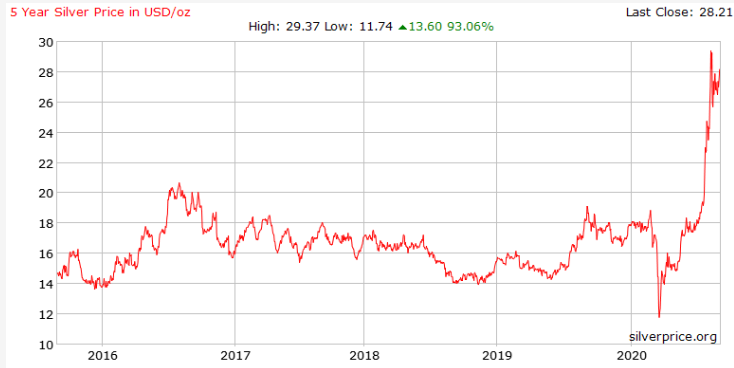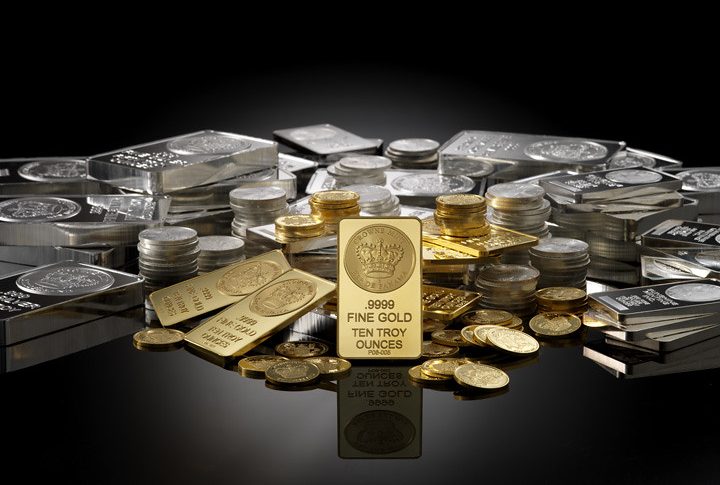Silver is a global standard for the trade of precious metals. Available under the symbol XAG/USD, it is available for trade as a CFD product. Silver’s value is determined largely by supply and demand. Institutional investors typically view silver as a hedging mechanism, in a similar fashion to silver. Australia, China, and the US hold the largest silver reserves among developed economies.
Current SILVER Price: $




Smiler Pairs
XAG/EUR, XAG/XAU

XAG/EUR

XAU/XAG
XAG/USD Historical Price Data
| Date | Price | Open | High | Low | Change % |
|---|
Monthly Change
| Date | Price | Open | High | Low | Change % |
|---|
Similar Assets Price Data

Why Look at Historical Silver Prices?
There are manifold factors involved in the determination of a bullish bias in silver. Let’s explore them one by one to determine the silver price forecast.
US Dollar & FED Monetary policy (Negative Rate Cuts): – Silver and the US dollar are negatively correlated nearly two-thirds of the time (when one advances, the other drops, and vice versa). While global investors do manage to run with the US dollar through periods of uncertainty, this type of movement was muted over the previous year, despite the trade war with China. They preferred to go with silver. The US Federal Reserve cut their interest rates from 1.75% to 1.25% in March, which drove sharp selling in the US dollar and triggered a bullish bias for the precious metal, silver. Later, considering the massive outbreak of COVID19, the Federal Reserve decided to cut the rate even further, from 1.25% to 0.25%, on March 16, which has made silver even more bullish this year.
Stock Market Crash – The recent 2020 crash on the US stock exchange wasn’t only limited to the US. Rather, it was a global stock market crash that began on February 20, 2020. On February 12, the Dow Jones Industrial Average, the NASDAQ Composite, and the S&P 500 Index all finished at record highs (while the NASDAQ and S&P 500 reached subsequent record highs on February 19). From February 24 to 28, stock markets worldwide reported their largest one-week decline since the financial crisis of 2008. The relationship between the silver prices and the stock markets is inverse. Mostly, the silver prices will drop when the stock markets are performing well and vice versa. Likewise, when the stock market collapses, the demand for silver increases, as more and more investors are looking at safer options.
COVID19 – Coronavirus Pandemic – The COVID19 outbreak, which was first identified in China, has infected people in 188 countries, and had a significant negative impact on the global economies, thus increasing the safe-haven demand in the market and sending the silver prices to record highs. Since the beginning of the year, investors have turned to the safe-haven metal, and this sentiment has been sustained, due to fears of the second wave of the coronavirus. As a result, the global equity market often moves lower, while trading in safe havens, like the US Dollar and silver, is bullish.
Geopolitical Tensions – China and the US have fired fresh sanctions at each other, in the ongoing conflict that has made silver futures climb to lifetime highs.



